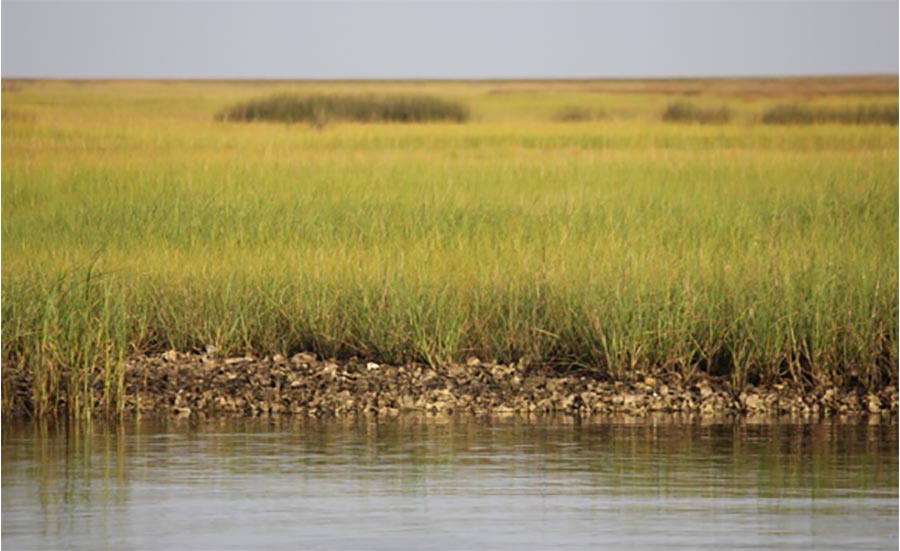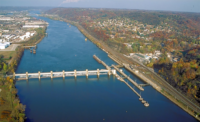A major infrastructure bill authorizing more than $10 billion for new Army Corps of Engineers water projects and providing funds to upgrade failing drinking-water systems is now on the books. President Obama signed the new measure on Dec. 16, six days after it gained final congressional approval when the Senate cleared it on a 78-21 vote.
The House had approved the bill on Dec. 8 by 360 to 61. (Read bill text here.)
The core of the new Water Infrastructure Improvements Act for the Nation, or WIIN, is the $10.3 billion in federal funds it authorizes for 30 new Corps flood-control, harbor-dredging, environmental restoration and other projects. Non-federal funds would supplement the federal dollars on many of the projects.
Although some Senate-approved clean-water programs did not make it into the final version, others survived, including funding for restoration programs for the Great Lakes and Lake Tahoe.
For construction firms, the projects contained in the bill's Corps section, titled the Water Resources Development Act (WRDA) of 2016, are "the meat and potatoes" in the legislation, says Mike Strachn, senior adviser with Dawson & Associates, Washington, D.C.
Strachn, a former Corps civil works and senior House Transportation and Infrastructure Committee aide, notes that getting projects to the construction stage "can, and frequently does, take years, depending on the size and complexity of the project."
But engineering firms are likely to see the impact of the new WRDA projects sooner, he says, observing that projects can involve one to four years of preconstruction enginering and design. "Those folks will get the work within the next year, depending on what happens with the balance of fiscal ’17 appropriations and what happens with the fiscal ’18 budget," Strachn says.
All of the authorizations are subject to annual appropriations.
The largest authorizations in the WRDA section of the new bill are $2.7 billion for Ohio River lock and dam improvements in Pennsylvania; $2.1 billion for storm protection and environmental restoration in southwestern coastal Louisiana; and $993 million for Central Everglades environmental restoration in Florida.
In addition, the package authorizes $170 million for programs related to drinking water, including $100 million to fix ailing water lines in cities such as Flint, Mich. But the newly enacted stopgap spending package appropriates the $170 million, assuring the money can flow to localities.
Provisions for Clean Water
In addition, Patricia Sinicropi, National Association of Clean Water Agencies senior legislative director, notes that the compromise WIIN measure authorizes $1.5 billion over five years for a Great Lakes restoration program. Sinicropi says, “That money goes to manage stormwater and nonpoint-source pollution, so that’s significant.”
Lake Tahoe will receive $415 million for nonpoint storm-management issues, she adds. The legislation also has provisions for the Columbia River and the Delaware River basin but doesn't authorize specific funding.
Water officials were disappointed that, in final negotiations with the House, lawmakers dropped a $1.8-billion authorization for a combined-sewer-overflow program; that authorization had been in the WRDA the Senate passed earlier this year. A Senate-approved provision to launch a drinking-water trust fund met the same fate.
But the WIIN bill’s main House author, Transportation and Infrastructure Committee Chairman Bill Shuster (R-Pa.), said in a statement after his chamber passed the measure, “Without question, this infrastructure legislation is a win for America.”
The bill's Senate supporters overcame objections from the Environment and Public Works Committee’s top Democrat, Barbara Boxer (Calif.), who slammed a provision dealing with water issues in her state. She called the provision a "poison pill" that would divert water from the salmon fishery industry to large agricultural interests. She contended that it would mean “the loss of thousands of fishery jobs,” would “roll back the Endangered Species Act” and “take away power from Congress to approve new dams all over the country.”
Other Senators, including Sherrod Brown (D-Ohio), blasted the measure’s authors for another reason—deleting language that would permanently require U.S.-produced iron and steel to be used on projects supported by drinking-water state revolving funds (SRFs).
The WIIN legislation does include a "Buy America" requirement for the SRFs, but only for 2017. Brown said the one-year provision is already in effect and falls far short of what is needed.
But. in the end, WIIN and WRDA advocates prevailed.
Port and Waterways Groups Are Pleased
Port officials were big winners in the WIIN Act, In addition to authorizing several dredging projects, the legislationincreases the federal funding share to 75% for deepening harbors to 50 ft. The 75% share now applies to dredging to 45 ft. The current federal contribution from 45 ft to 50 ft is 50%.
The American Association of Port Authorities also was happy that the final package included language calling for a 3% annual increase in targets for spending from Harbor Maintenance Tax collections. The increase stays in place even if estimated tax receipts decline in a given year.
Waterways Council Inc. welcomed authorizations for three Corps inland-waterways projects: the Ohio River locks and dams, the Calcasieu Lock in Louisiana and Brazos Island Harbor in Texas. Further, the council was pleased that lawmakers didn't include a public-private-partnership provision, which, it said, would have allowed tolls and lockage fees on tributaries. WCI fought that provision, which it called "onerous."
The legislation contains language that gives states the authority to issue permits for the use of coal ash, subject to U.S. Environmental Protection Agency oversight. Coal ash is used in some construction materials.
Story updated on Dec. 16 with bill's enactment. Further, an incorrect reference in an earlier version regarding Sen. Joe Manchin's push for the provision dealing with coal miners' pension and health benefits was deleted. He sought to attach the provision to the continuing resolution, not the WIIN.





Post a comment to this article
Report Abusive Comment